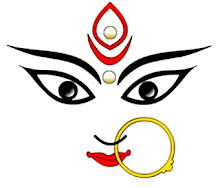

The
Tirupporur Mur ugan Temple
ugan Temple is considered as the place of the
sacred war. It is one of the 33 major temples of Tamil Nadu and is dedicated to
Lord Muruga. This temple is situated 25-km away from
Chingleput and 45-km from
Chennai. This ancient temple dates back to the
Pallava period.The Tirupporur Murugan Temple is called by names like
Poriyur or
Yuddhapuri or
Samarapuri. According to the legends, after defeating
Soorapadman at
Tiruchendur, Skanda destroyed the rest of the demons at
Tirupporur.
History of The Temple
In the temple there are inscriptions that belong to the early
10th century. There are inscriptions also belonging to the period of
Vikrama Chola of the
12th century in the temple. After the glory of
Tirupporur reached its peak, it faded into oblivion for some time. But
Chidambara Swamigal rediscovered and renovated its glory in the middle of the
seventeenth century. It is said that Tirupporur was a descendant of one of the poets of the
"Tamil Sangam" of
Madurai. Previously this place was a forest covered totally by
Palmyra trees. It is believed that the idol of Lord Muruga (also spelt as Murugan) is "
Swayambhu Murti", which lay covered up by an anthill. It is said that the image of
'Skanda' was discovered by
Chidambara Swamigal in the anthill. He then built the temple again and reinstalled the image. Later the temple was looked after by the decedents of Chidambara Swamigal and reached its present glory.
The Legend Related to the Temple
The
Tirupporur Murugan Temple has many legends related to it. According to one of the legends,
Lord Vishnu and his consort
Lakshmi were subjected to the curse of
Kanva rishi. Lord Shiva came to this place to liberate and relieve them from the effect of the curse. Therefore at Tirupporur temple both
Lord Shiva and his son
Muruga are worshiped. According to the
Sthalapurana, Lord Muruga with his consorts
Valli and Devayanai granted protection to devas and explained the meaning of
Pranava to Agastya Muni at this place.
Other legend says,
Skanda described the principle of
pranava or
reality to the
devas here. The very concept of
Pranavam is said to have worshiped
Skanda here, and the hill behind the temple is known as
"Pranava Malai'.
Legends also say that
Lord Vishnu worshiped
Shiva as
"Vanmeekeswara" on the
Pranava Hill. He did this to get rid of the sin of having killed
Soorapadman. Skanda is enshrined in several forms in this temple, all of them related to legends from the Skanda Puranam. The best of these is the depiction of Skanda as a warrior,
"Samhara Subramanya". Skanda is also enshrined in the form of a
child, explaining the meaning of the oneness of creation
Om to his father
Lord Shiva.
Architecture of The Temple
The eastern side of the temple is sanctum sanctorum where there's a
'Palmyra' tree. The anthill under it, has "
Kanda Perumal" with
"Valli" and "
Devayanai" on a small
Peetha. Chidambara Swamigal used to perform
Abhishekam to these images. There's an image of the lord present in the anthill which is covered with Kavacha and other jewels without the ritual of
Abhishekam (also spelt as Abhisheka) performed for this deity. The temple has a hall having 24-pillars and another circular hall having 30-pillars. There is a shrine to "Vembadi Vinayaka" under a Neem tree. On the southern side of the temple, there are two sacred
Teerthams (also spelt as Teerthas or Theertahs),
"Saravana Poigai" and
"Valliyar Odai". Mandapam on the eastern side of the Teerthams has four pillars. There is also another Teertham by name
"Pranavamritam".
Worship
The
presiding deity here is offered four worship services each day.
Festivities
The temple festival celebrated here is the
Skanda Sashti, celebrated in the month of
Aippasi (October-November). Other festivals that are celebrated over here include "
Margazhi Tiruvadirai" and "
Navaratri".
How to Reach the Tirupporur Murugan Temple
- Air: Nearest airport is Chennai, which operates both national and international flights
- Rail: Chennai is the nearest railway station, which is a major junction and is well connected with different parts of Tamilnadu and India.
- Road: Tirupporur is accessible by road from Chennai and Chengalpattu. Private taxis and buses ply from Chennai and Chengalpattu to Tirupporur.


 paintings. Many of the shrines relate the story of Lord Murugan's victory over demon Soorapadam. An audio tour is available to visitors.
The walk to the entrance is itself quite a pleasant experience through a lake and ponds filled with hundreds of colourful fish. The Ramayana Cave occurs to the extreme left as one faces the sheer wall of the hill. On the way to the Ramayana Cave, 50-foot (15 m) tall murti of Hanuman and a temple dedicated to Hanuman, the noble monkey devotee and aide of Lord Rama. The consecration ceremony of the temple was held on November 2001.
paintings. Many of the shrines relate the story of Lord Murugan's victory over demon Soorapadam. An audio tour is available to visitors.
The walk to the entrance is itself quite a pleasant experience through a lake and ponds filled with hundreds of colourful fish. The Ramayana Cave occurs to the extreme left as one faces the sheer wall of the hill. On the way to the Ramayana Cave, 50-foot (15 m) tall murti of Hanuman and a temple dedicated to Hanuman, the noble monkey devotee and aide of Lord Rama. The consecration ceremony of the temple was held on November 2001.








































